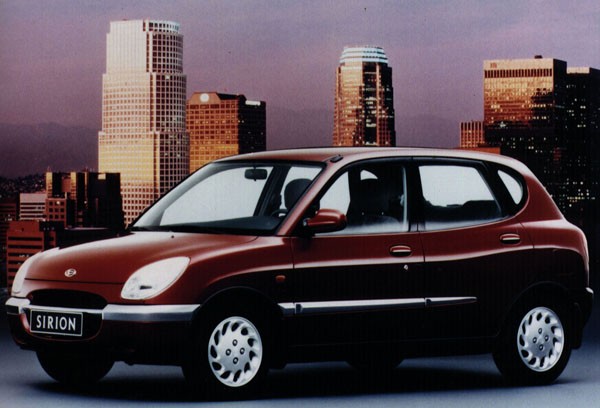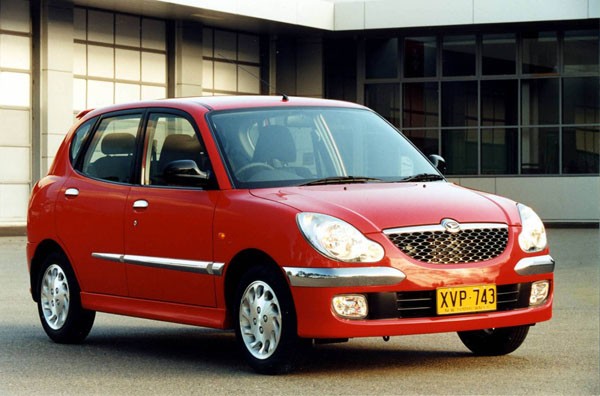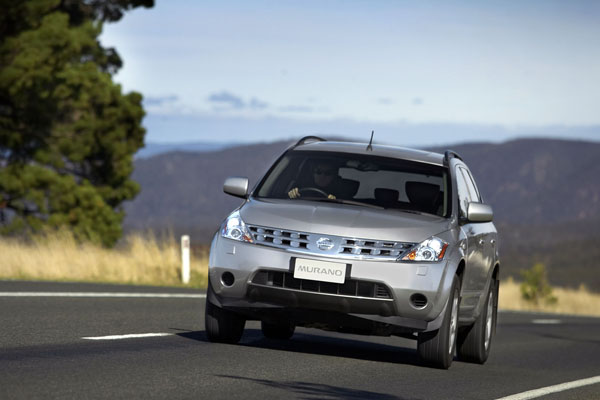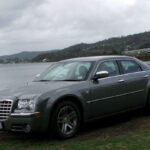Daihatsu Sirion is a well-built Japanese car with an excellent reputation for reliability and low running costs. It wasn’t as successful as big brother Daihatsu Charade.
So there are some bargains in Daihatsu Sirions as they are regarded as orphans and have suffered in resale value because of this. Despite this they can be kept on the road with a minimum of expense if you choose a good one and look after it correctly.
The new Daihatsu Sirion, released here in April 2002, was substantially bigger than the first-generation model that was launched in Australia in1998. There’s decent interior room and a boot that can handle a fair amount of luggage. The older models are smaller and probably best left to couples and singles, but the 2002 model can work as a family car if the children are in their pre-teen stage.
Daihatsu Sirion is well equipped, coming with air conditioning, a four-speaker CD stereo, power door mirrors, lap-sash safety belts in all five seats and dual airbags. A model worth chasing down is the Sirion Sport, with alloy wheels, a front body kit that includes foglights, a sportier design of rear lights, colour-coded door handles and ABS brakes it provides a lot of small car for a pretty reasonable price.
The first series Daihatsu Sirion used an interesting three-cylinder 1.0-litre engine of the type the Japanese marque had made famous for many years.
With the larger model of 2002 Sirion power came from a more conventional four-cylinder, twin-cam unit displacing 1.3 litres. The latter produced a relatively modest 64 kilowatts, but variable valve timing meant it has strong torque throughout most of the rev range, peaking at 120 Nm at a reasonably low 3200 rpm.
Transmission choices are five-speed manual and four-speed automatics. Autos don’t take as much out of the performance as you might expect as the Sirion is relatively light. But our gearbox of choice would be the manual unless you’re doing a lot of commuting in traffic. The manual’s gearshift is light and easy so it’s not a hardship to do your own shifting.
Handling is competent without being in any way exciting – definitely not a car for the enthusiast. There’s a reasonably neutral feel at everyday road speeds, but understeer comes in too early. A good set of tyres can give it a better feel and provide grip.
Daihatsu has been controlled by Toyota since the early 2000s after getting into financial trouble. Toyota Australian stocks spare parts for most models younger than about 10 years. Check with your local dealer and/or check out parts recyclers in your neighbourhood.
As it’s a relatively small car the Sirion doesn’t have a lot of underbonnet space so can be annoying to work on. Workshop manuals are available and are recommended. Don’t tackle any safety related items unless you’re an expert.
Insurance costs are generally towards the bottom end of the scale and we don’t know of any major company that charges extra for the Sirion Sport, probably because it’s a dress-up variant not a real sporty design.
WHAT TO LOOK FOR
Look for sun damage on the dash top and rear shelf.
Check for tears in the seats and damage to floor and boot mats.
Rust is rare but if it does get a hold it can run through very quickly due to the light construction of the Sirion. Look in the lower body areas, as well as the doors and hatchback. The corners of these panels are usually the first to suffer.
Check the floor of the cabin and the boot for rust. Repairs there can be expensive.
Look for signs of crash repairs, minor repairs correctly executed are to be expected in older cars that spend a lot of time in city/suburban driving, but if you think a Sirion has been in a major crash have it inspected by a professional as sub-standard cars can be dangerous.
The engine should start quickly even when cold and should have a relatively smooth idle from start-up. Four-cylinder engines are smoother than the threes.
Check there is no smoke from the exhaust tailpipe when the engine is accelerated hard after idling for a while.
Gearchanges should all be light and easy, with the clutch taking very little effort to operate.
If the gearbox baulks or crunches when you do a fast change down, there could be expensive troubles. The third to second change is usually the first to suffer.
If the clutch is heavy or sticks during its movement it could be due for an overhaul.
Drive the car at low speed with the steering on full lock in one direction and then the other and listen for a clicking sound of worn universal joints.
HOW MUCH?
Expect to pay from under $1000 to $2500 for a pre-2004 Sirion; $3000 to $5500 for a 2005 Sirion; $4000 to $7000 for a 2005 SX; and $5000 to $8000 for a 2005 Sports.
CAR BUYING TIP
Buying an ‘orphan’, a car that’s no longer imported, can save you money. But do your homework on parts and knowledgeable mechanics before getting in too deep.













